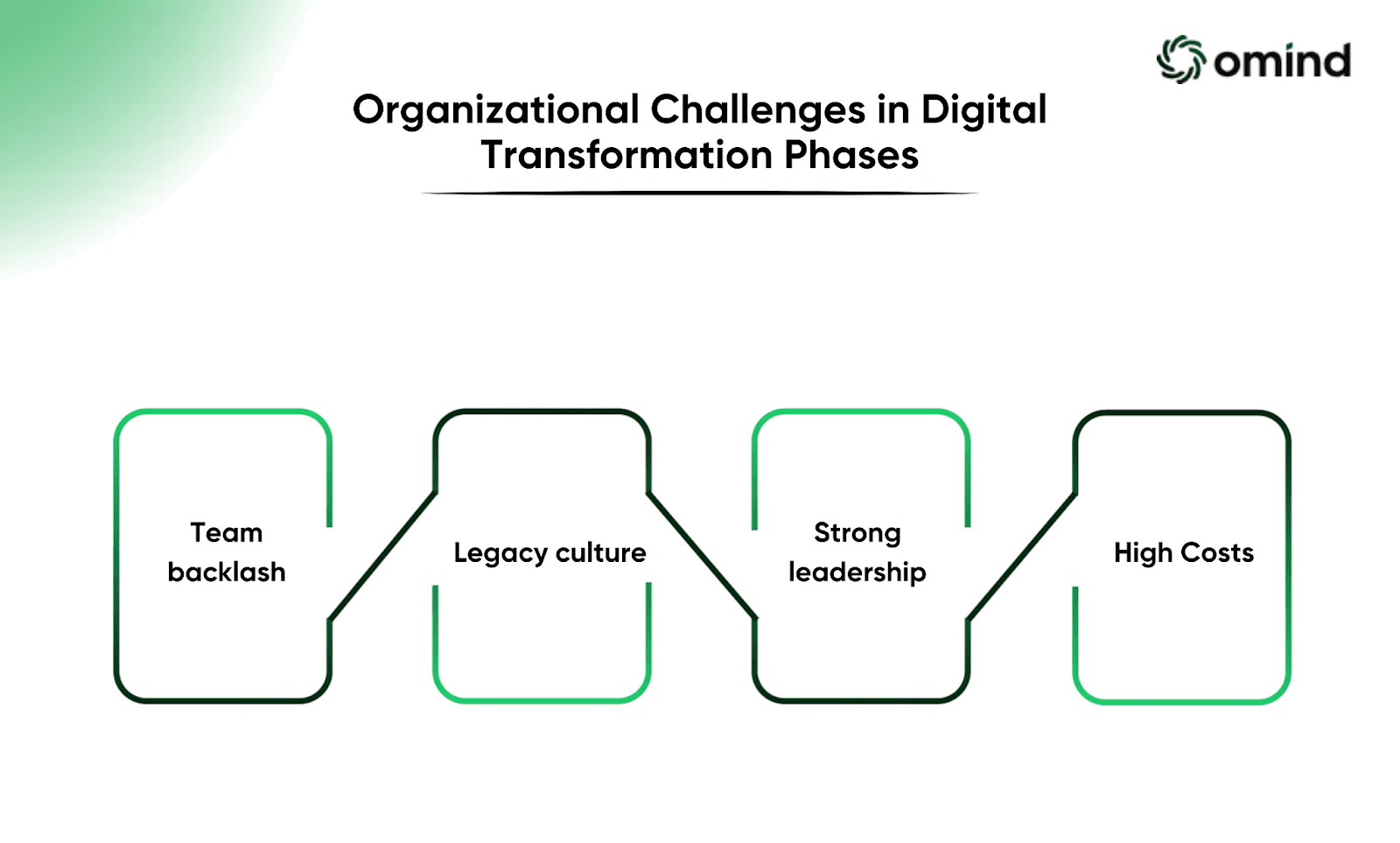In a previous article, we spoke at length about the many benefits of digital transformation and how companies are rapidly adapting it to their operations and customer experiences. Along with the many benefits presented, we also briefly addressed a few of the challenges that digital transformation brings with it. However, these challenges that appear minor at first can quickly turn into rapid, process-disintegrating hurdles. For the same reasons, we’ll be expanding on some of the challenges faced during the various digital transformation phases, and how they can be addressed.
What Is Digital Transformation?
In case you haven’t read our previous articles and want a primer: At its core, digital transformation involves integrating digital tools and platforms into every aspect of the business, from operations to customer interactions. It requires rethinking traditional, typically manual/entirely human-led methods of doing business and finding innovative ways to adapt digital capabilities in the workforce. Equipping employees with the skills and tools they need to thrive in a digital environment is another critical component of successful digital transformation.
Digital transformation offers significant benefits. It can help you stay ahead of competitors by enabling businesses to offer new products and services and can increase revenue by creating new revenue streams depending on how well a company augments its customer experience. All in all, it can help in expanding market reach. Enhanced customer experience is another key advantage of digital transformation: Digital transformation can lead to a better understanding of their customers, and improve operational efficiency by automating processes and optimizing workflows.
With that out of the way, let’s take a look at the various challenges faced in digital transformation now.
Technological Challenges in Digital Transformation Phases
Digital transformation often involves integrating new technologies with existing systems, which can present significant challenges.

Older Solutions: One of the most common hurdles is the compatibility issue with legacy systems. These outdated systems may not be designed to work seamlessly with modern technologies, leading to integration difficulties, performance issues, and increased costs. To address this, companies may need to invest in modernization efforts or consider phased replacements to gradually transition to more compatible systems.
Cybersecurity: As companies increasingly rely on digital technologies to store and process sensitive data, they also become more vulnerable to cyberattacks such Data breaches, ransomware attacks, and phishing scams. To mitigate these risks, companies must invest in robust security measures such as firewalls, encryption, and regular employee training.
Scalability: This is another challenge that companies often face during digital transformation: As businesses grow and expand their digital operations, their infrastructure may not be able to handle increased demand. Cloud computing can be a particularly effective solution for scaling digital infrastructure, as it allows companies to quickly adjust their resources based on demand.
The Right Team: Finally, digital transformation requires a workforce with expertise in a wide range of technologies like cloud computing, data analytics, and now artificial intelligence. Companies have to invest in training and development programs to upskill their existing employees or hire new talent with specialized digital skills.
Organizational Challenges in Digital Transformation Phases
Resistance to change has always been a problem in organizations, and more so with digital transformation. Here’s some of the ways that digital transformation can be impacted by the organization.

Team backlash: Employees may fear job loss, disruption to their routines, or the need to learn new skills. This is why organizations must effectively communicate the benefits of digital transformation, engage employees in the change process, and provide them with the necessary training and support. A clear vision for the future can also help to motivate employees and inspire them to embrace change.
Legacy culture: Just like legacy technology, a company's unchanged culture can also be a significant barrier. A culture that is risk-averse, hierarchical, or siloed can hinder innovation and experimentation. To counter this, organizations must promote collaboration, encourage experimentation, and reward risk-taking.
Strong leadership: Without effective leadership, it can be difficult to set a clear direction, motivate employees, and overcome challenges. Leaders must be able to articulate a compelling vision for the future and inspire confidence amongst employees to take control of the transformation process.
High Costs: Limited financial resources can constrain a company's ability to invest in digital technologies and initiatives. Careful planning and prioritization of digital investments are essential to maximize the return on investment. Organizations may need to consider outsourcing certain activities, using cloud-based solutions and carefully managing their budget and making informed decisions.
Market Challenges In Digital Transformation Phases
Even if the organization finds its way through the challenges listed above, there’s no way of saying how the digital market will react or how the company will be able to keep up with market trends. Here are some of those challenges in detail.
Rapid Technological Advancements: Keeping up with the pace of technological change can be challenging, as new innovations may quickly render existing solutions obsolete. Companies must continuously monitor emerging technologies and adapt their strategies accordingly.
Increased Competition: Digital transformation can level the playing field, making it easier for smaller or newer competitors to challenge established players. Companies must differentiate themselves through innovation, customer experience, and efficient operations.
Changing Customer Expectations: Customer expectations are evolving rapidly in the digital age, and companies must adapt to meet these changing needs. This may involve offering personalized experiences, providing excellent customer service, and using digital channels to engage with customers.
The Final Word
Despite all these challenges, organizations are currently looking at investing upwards of $.4.5 trillion, according to research by Gartner, which means that the benefits of digital transformation certainly outweigh the considerations and challenges associated with it. By understanding the key challenges and opportunities, organizations can successfully navigate this journey and make sure that they stay ahead of the curve.
AUTHOR
Team Omind
Empowering Businesses with Unified Customer Experience Platform, Leveraging Advanced AI and Intelligent Automation
PRODUCT
Digital Transformation
Share LINK
Related Blogs



